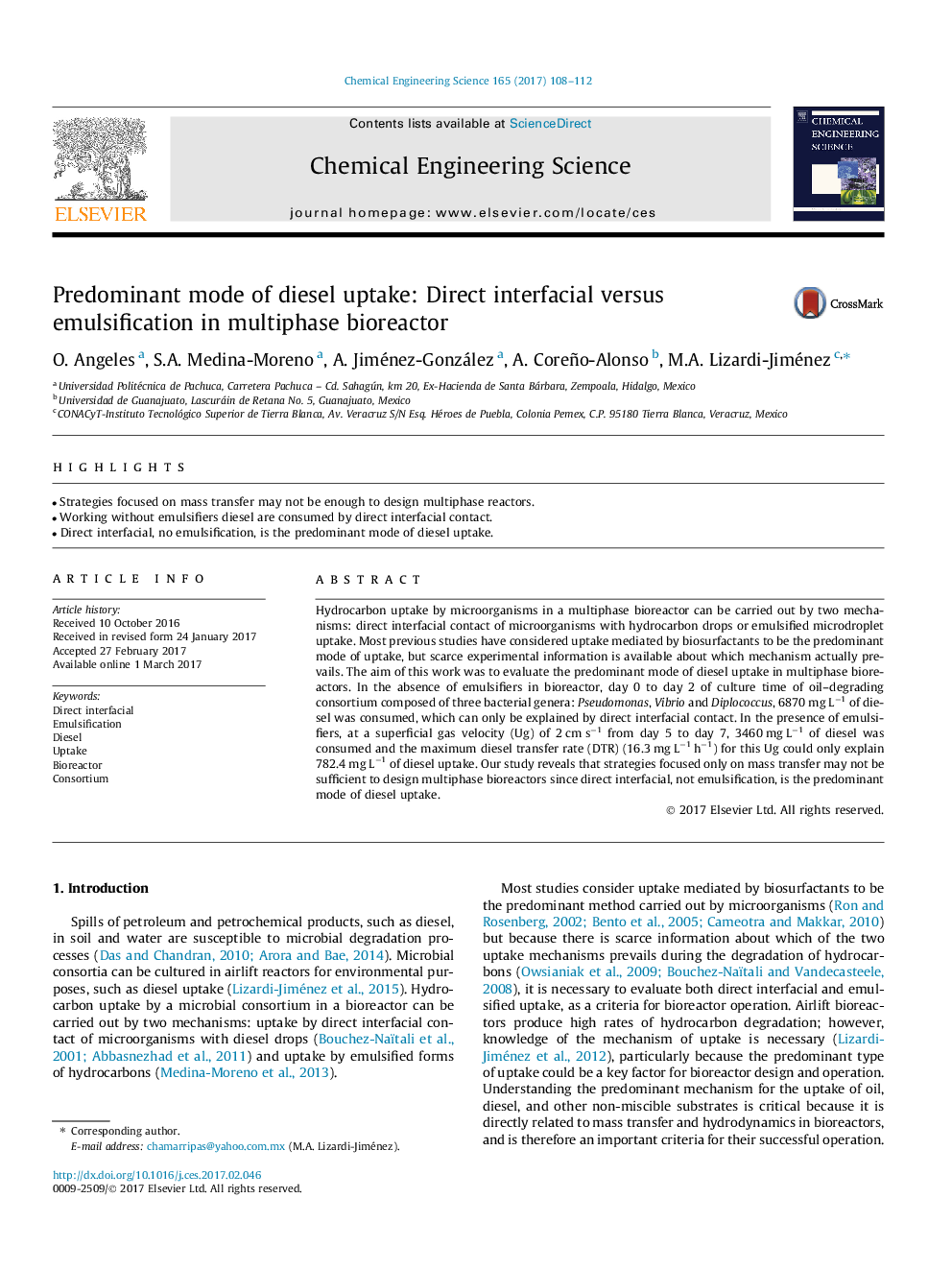| Article ID | Journal | Published Year | Pages | File Type |
|---|---|---|---|---|
| 6467456 | Chemical Engineering Science | 2017 | 5 Pages |
â¢Strategies focused on mass transfer may not be enough to design multiphase reactors.â¢Working without emulsifiers diesel are consumed by direct interfacial contact.â¢Direct interfacial, no emulsification, is the predominant mode of diesel uptake.
Hydrocarbon uptake by microorganisms in a multiphase bioreactor can be carried out by two mechanisms: direct interfacial contact of microorganisms with hydrocarbon drops or emulsified microdroplet uptake. Most previous studies have considered uptake mediated by biosurfactants to be the predominant mode of uptake, but scarce experimental information is available about which mechanism actually prevails. The aim of this work was to evaluate the predominant mode of diesel uptake in multiphase bioreactors. In the absence of emulsifiers in bioreactor, day 0 to day 2 of culture time of oil-degrading consortium composed of three bacterial genera: Pseudomonas, Vibrio and Diplococcus, 6870 mg Lâ1 of diesel was consumed, which can only be explained by direct interfacial contact. In the presence of emulsifiers, at a superficial gas velocity (Ug) of 2 cm sâ1 from day 5 to day 7, 3460 mg Lâ1 of diesel was consumed and the maximum diesel transfer rate (DTR) (16.3 mg Lâ1 hâ1) for this Ug could only explain 782.4 mg Lâ1 of diesel uptake. Our study reveals that strategies focused only on mass transfer may not be sufficient to design multiphase bioreactors since direct interfacial, not emulsification, is the predominant mode of diesel uptake.
